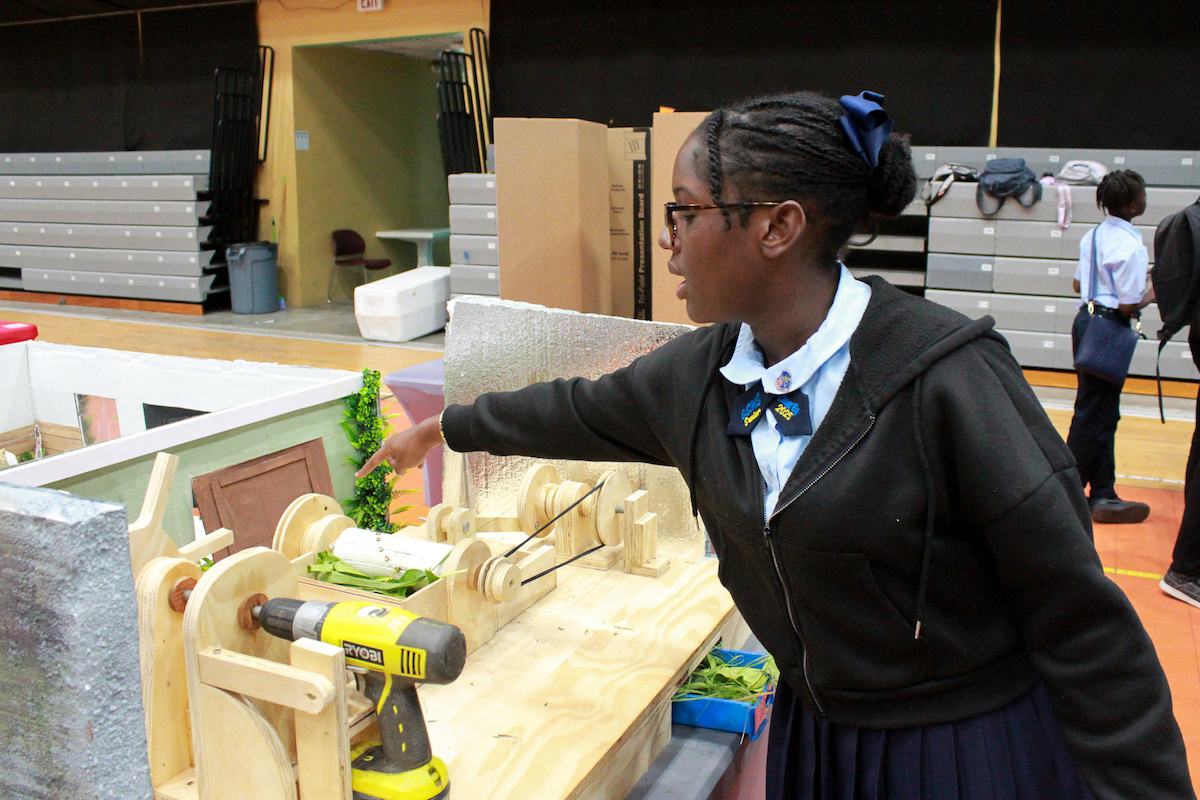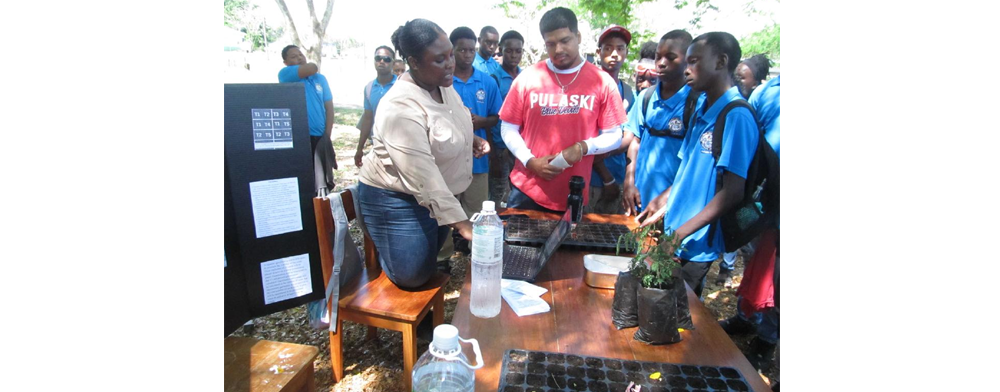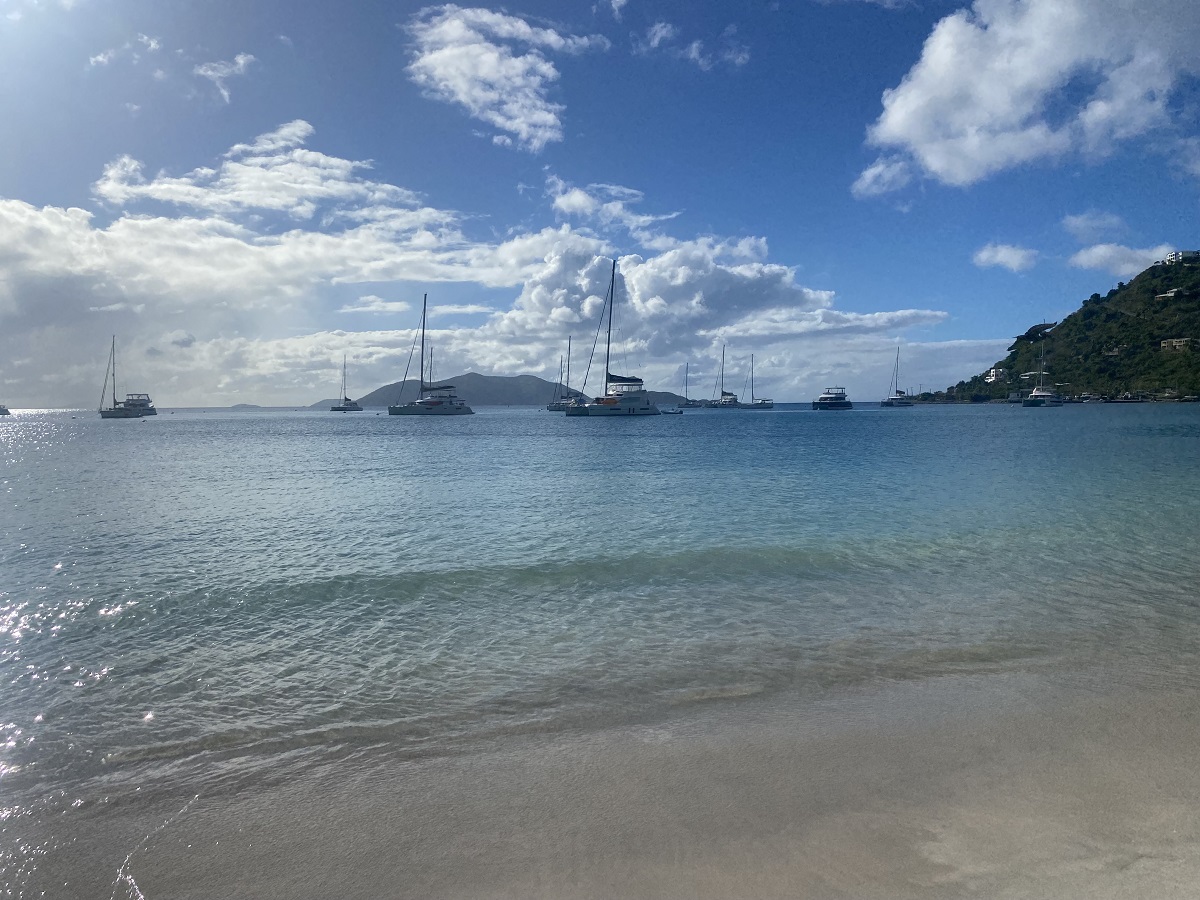

When Amanda Penn was asked to use science to address a problem facing the Virgin Islands, her mind turned to farming.
For her science fair project this year, the Elmore Stoutt High School senior built a model of a mill designed to accelerate the process of converting organic waste to compost. Ms. Penn said she was inspired to tackle the project after speaking with local farmers about the lack of support for growing produce.
“When you constantly take plants out of the ground and not [put] anything back into it, there will be a loss of nutrients,” Ms. Penn told the Beacon during the science fair on Friday at the Multi-purpose Sports Complex. “So then my job is to basically take their waste and put it back into the soil.”
For this year’s projects, students were asked to “make it more local: ask a question, give a hypothesis, give a solution,” according to Renee Weston-Caines, the education officer for science.
And students listened. Ms. Weston-Caines estimated that about 80 percent of this year’s projects focused on local issues.
“I feel now people are going to understand that there is a correlation, like science is not just something you learn in class,” she said. “You can take what you learn in class and apply it to issues that we have.”

179 projects
Thirty-two primary and secondary schools across the territory participated in this year’s science fair. Last week, students presented their projects to judges, their peers and the public.
Of the 164 total science projects, 100 were completed by primary school students, 64 by high schoolers. Fifteen other students made art projects.
Amber Hastings, a junior at BVI Seventh-day Adventist School, considered the environmental issues facing the VI. Among them, she said, are cruise ship emissions that affect her health.
In response, she carried out an experiment designed to demonstrate how positive and negative ions and a magnet might be used to move a boat through the water in lieu of a traditional engine.
“I have a positive electrode and a negative electrode, and my positive [electrode] attracts the negative ions in the water and my negative electrode attracts the positive ions in the water,” she explained. “When I add a magnet to that, it causes the moving ions to go forward.”
![]()
Ms. Hastings liked the fair’s focus on solutions, but she said she would also be interested in the event featuring a “broader spectrum” of different projects.
“When you are only basing it on problems and solutions, you don’t get everything you can get,” she said.
This year, additional prizes including a “people’s choice” award were added to the usual accolades.




